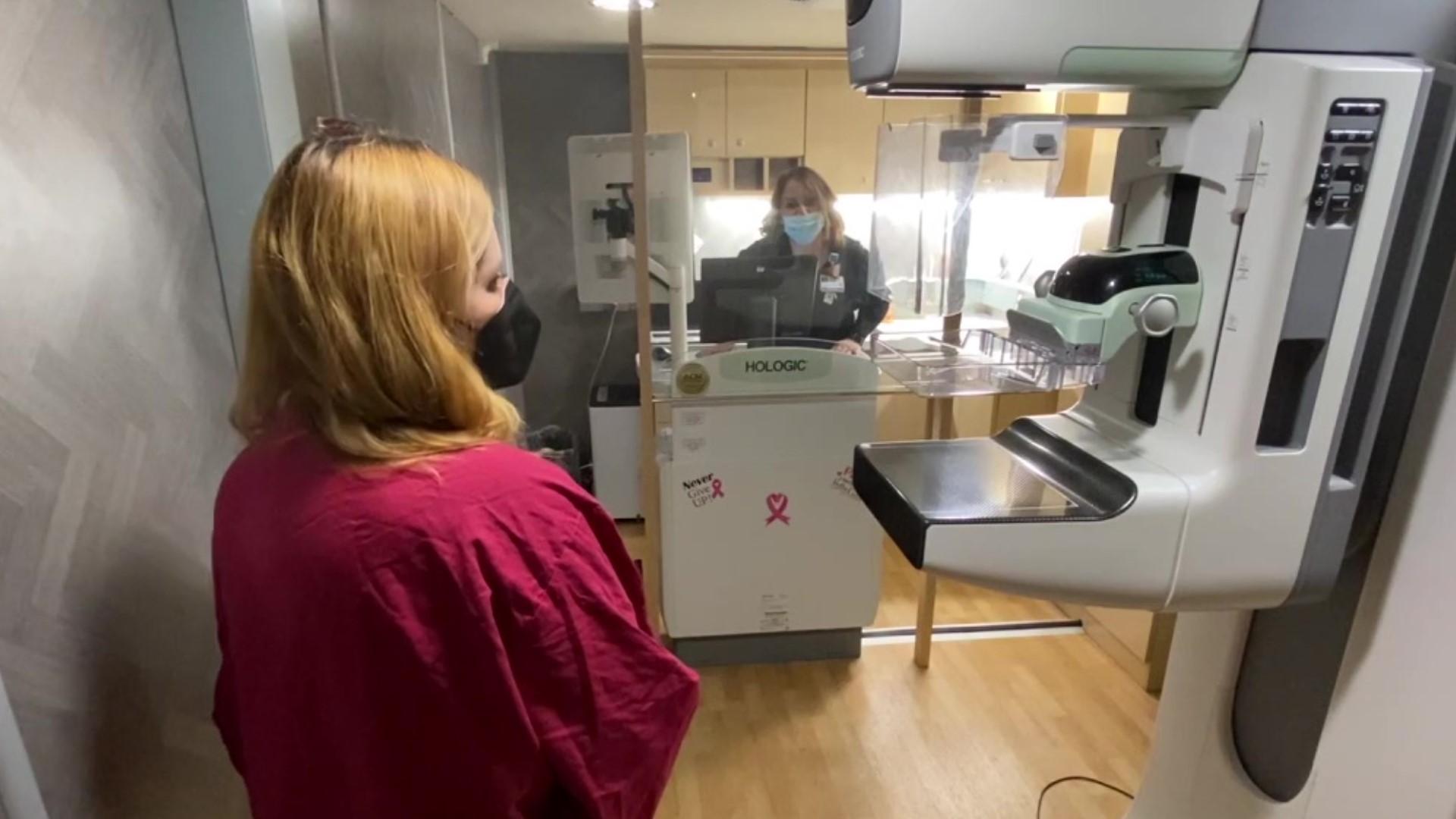LUZERNE COUNTY, Pa. — One in eight women will develop breast cancer. It's a statistic that Nikki Krize knows well. Her paternal grandmother was one of those women. No one wants to get a mammogram, but health experts say women should get one when they turn 40 and sometimes sooner.
"It saves lives. Don't be nervous because it's here to prevent you from having a deterrent from your path of having a wonderful, successful life," said Dr. Tatianie Jackson, a breast radiologist at Geisinger Wyoming Valley Medical Center near Wilkes-Barre.
Dr. Jackson or one of her coworkers would be reading Nikki's mammogram. Nikki's appointment was on a Friday at Geisinger's mobile mammogram unit, which was in Pottsville that day. Nikki got a baseline mammogram, an initial screening to figure out what her "normal" is.
"With a baseline mammogram, we look at one breast compared to the other breast. When we have a patient who has had a mammogram before, we're looking at one mammogram to the next and looking for similarities or any abnormalities," explained Gina Markle, a mammography technologist at Geisinger. "We're going to do some personal history questions first."
A mammogram is considered the gold standard when it comes to detecting breast cancer. It takes two or three pictures of each breast while compressing it.
"If you try to pass light through something, it's going to be reflected and scattered in many different directions, so you can't really see the light come through the other side. But when you put that compression, it thins out the tissue so that the x-ray can come through and take a beautiful picture," Dr. Jackson said.
Dr. Jackson stressed that the radiation we receive from mammograms is very low. Breast cancer usually presents itself with a lump, bloody nipple discharge, or skin changes, but it's not always visible. That's why a mammogram is helpful.
"We're going to be accessing what your tissue looks like on the inside, comparing it from one breast to the other and looking for comparison," Markle said.
The entire process took less than ten minutes.
Part two of Nikki's story:
See more Healthwatch 16 stories on YouTube.

